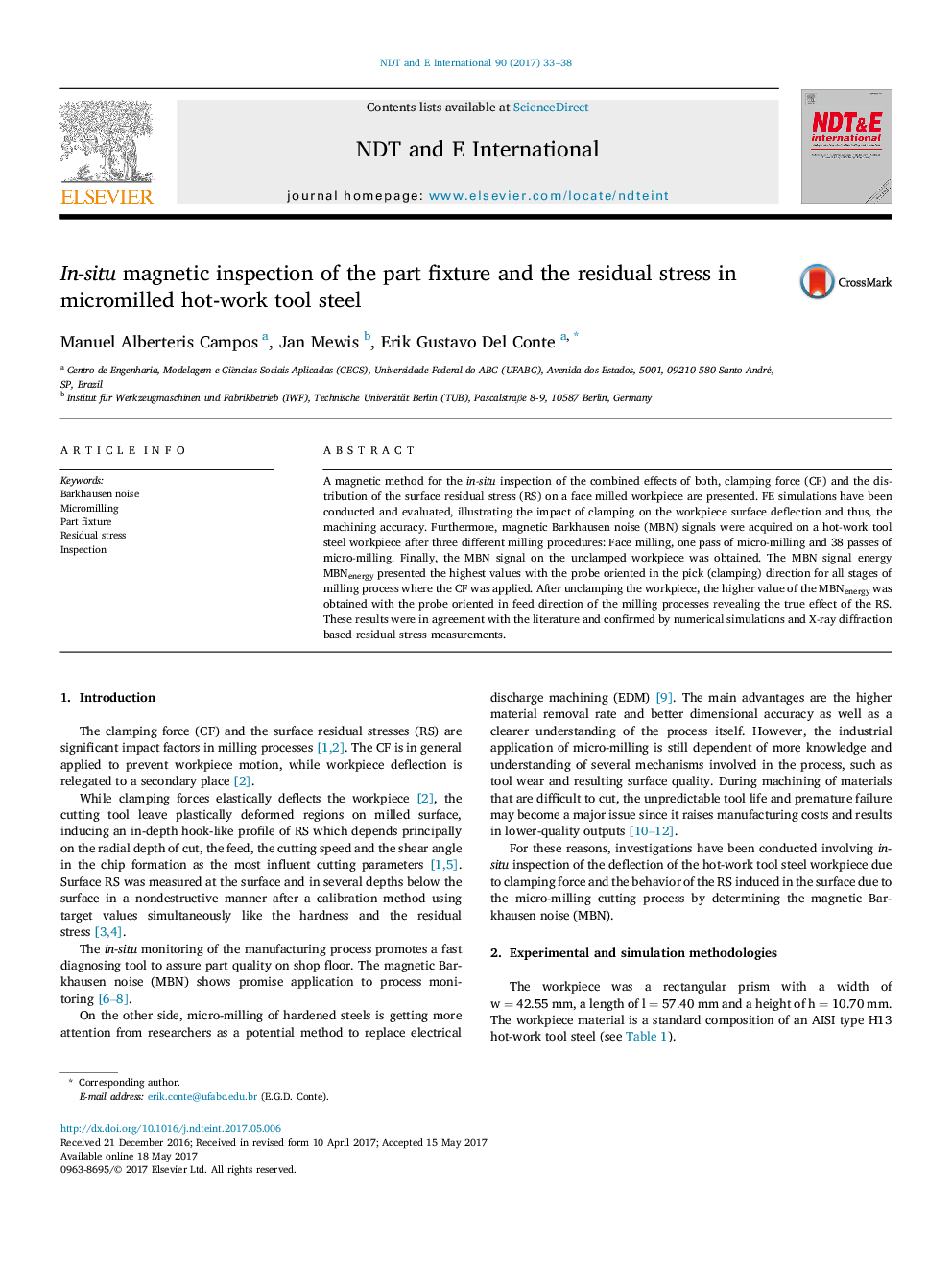| Article ID | Journal | Published Year | Pages | File Type |
|---|---|---|---|---|
| 4925110 | NDT & E International | 2017 | 6 Pages |
Abstract
A magnetic method for the in-situ inspection of the combined effects of both, clamping force (CF) and the distribution of the surface residual stress (RS) on a face milled workpiece are presented. FE simulations have been conducted and evaluated, illustrating the impact of clamping on the workpiece surface deflection and thus, the machining accuracy. Furthermore, magnetic Barkhausen noise (MBN) signals were acquired on a hot-work tool steel workpiece after three different milling procedures: Face milling, one pass of micro-milling and 38 passes of micro-milling. Finally, the MBN signal on the unclamped workpiece was obtained. The MBN signal energy MBNenergy presented the highest values with the probe oriented in the pick (clamping) direction for all stages of milling process where the CF was applied. After unclamping the workpiece, the higher value of the MBNenergy was obtained with the probe oriented in feed direction of the milling processes revealing the true effect of the RS. These results were in agreement with the literature and confirmed by numerical simulations and X-ray diffraction based residual stress measurements.
Related Topics
Physical Sciences and Engineering
Engineering
Civil and Structural Engineering
Authors
Manuel Alberteris Campos, Jan Mewis, Erik Gustavo Del Conte,
